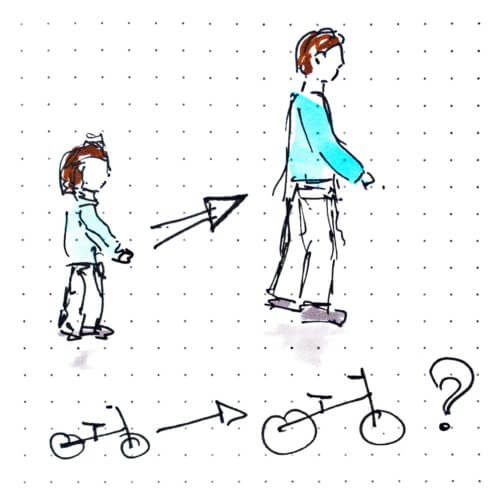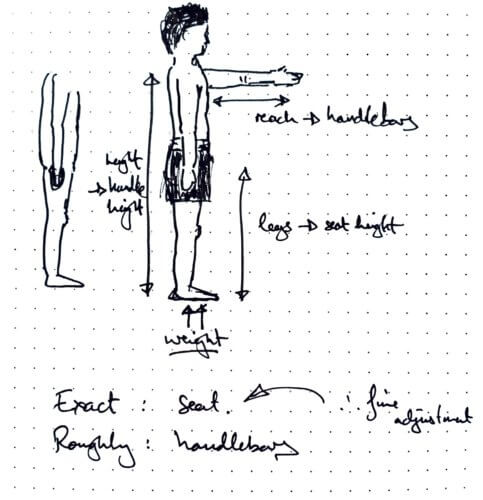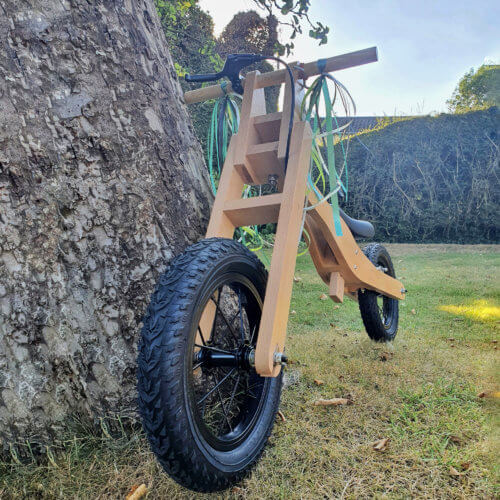A balance bike is a great stepping-stone to a full pedal bicycle, offering children a new-found freedom to zoom around, and allowing them to learn the basics of bicycling without pesky pedals to get in the way.
Need
There’s a problem with children’s stuff in general: as adaptable as children are, some things are just the wrong size. For the child, that means either dealing with the awkwardness of not quite fitting, or having to deal with change as toys, objects, and clothing are replaced to match their size. For parents, it means pressure to spend constantly, pressure felt both financially and socially. For the planet, it means a lot of barely-used items going to waste (even if a proportion are recycled or reused). Products currently on the market make something of an attempt to address this problem by allowing height adjustment of the seat. But the adjustment available is limited, and there are other dimensions along which children grow.

Solution
I set out to design and make a balance bike that would more fully be able to grow with its rider. I researched the geometry of bicycle design to understand the key parameters, sought real-world opinions and frustrations from parenting forums online, and consulted anthropometric data to set detailed requirements for my design.

I developed a design that would allow adjustment to suit a much greater range of user heights. By flipping the orientation of the joint between the front wheel column and the body of the bike, a higher base seat position is achieved. This operation does require adult intervention, but is as simple as undoing and redoing a locking nut and bolt. The change also affects the steering: the change in geometry makes it less stable, and therefore allows the rider to be more agile, a change that will suit the more practiced and older rider.


After producing and reviewing a small cardboard prototype I constructed the balance bike using solid beech, chosen for its strength-to-weight ratio and durability. The variability of beech, as a natural material, and its relative cost would likely make it less suitable for any larger-scale production. A suitably-specified plywood may be a better choice in that context.

The user of the initial version reports he is happy with its performance!
